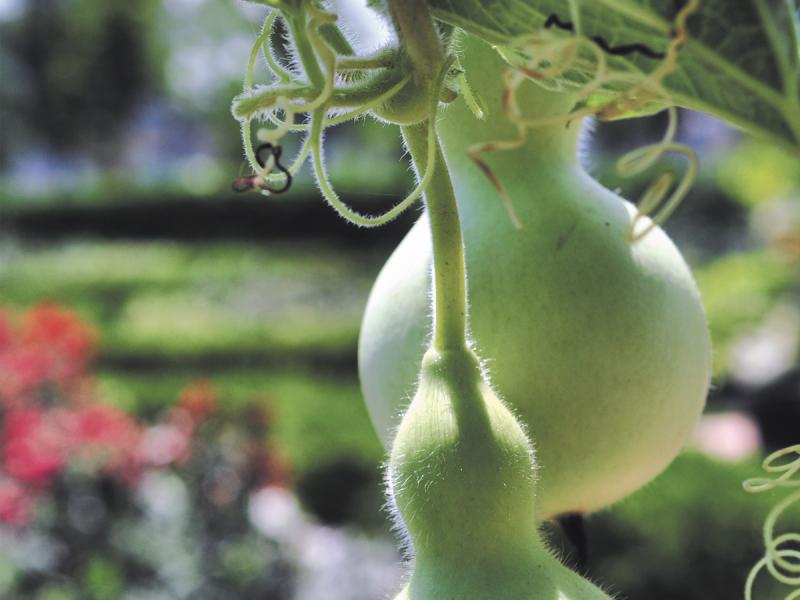When Lucille Ball became pregnant, the men running CBS were mortified that a baby was the logical conclusion of S-E-X, and even though Lucy and Ricky were married on the show and in real life, they forbid the use of the word “pregnant" on TV. Instead Lucy was said to be "expecting." And all along, Ricky played giant conga drums ... even one made from a squash!
The giant conga drum was made from the hardened shell of the Zucca Melon (Lagenaria siceraria) from Sicily. These are actually not melons, but the largest bottle gourd in the world.
You can grow these giant green-skinned gourds in your garden and expect man-sized fruits weighing up to 130 pounds. Zucca Melons have been described as a cross between a zucchini and a hippopotamus.
Best of all, you can eat them, and they are delicious. When they are picked young, you can cook them like zucchini. Zucchini is, after all, Italian for “little zucca” or little squash. During World War II, imports of citrus were stopped, and Zucca Melons were made into citrus peel substitutes. The Zucca flesh has almost no taste on its own, but readily absorbs the flavors of everything else while cooking. This made the melon very popular as a filler in jams and other foods.
There is really no trick to growing show-stopping monster gourds. They seem to thrive on neglect.
For most gardeners, it is best to start seeds indoors in individual peat pots. Harden off the seedlings by moving them to a shaded outdoor spot sheltered from the wind and rain. Gradually increase their time outdoors until they are ready to transplant.
Transplant your Zucca Melon plants outdoors once the soil has warmed up. A raised bed will warm up sooner. Choose a spot in full sun with rich, well-drained soil with a pH of 5.8-6.2. Use a fertilizer that is lower in nitrogen than phosphorus and potassium. Too much nitrogen encourages lots of vines and leaves, but few fruits.
Because the Zucca Melon blooms at night, it is pollinated by night-flying wasps and other insects. To be sure of a crop, you may have to hand-pollinate the blossoms. This is easily done with a fine artist’s brush simply going from one white blossom to the next. The male flowers have long peduncles, while the female flowers have a tiny, undeveloped fruit-shaped ovary at their base.
As you might expect, a giant gourd grows on giant vines. Zucca Melon vines will grow 25 feet long or even longer. To increase fruit set, many growers cut off the tips of the vines once they reach six to eight feet in length. This pruning encourages the vines to send out side branches that will bloom and set more fruit.
Gourds will first grow to their maximum size before filling out and growing thicker walls. Water once a week if there is no rain. Avoid getting the leaves wet. After the soil has warmed up, apply a mulch to keep down weeds and retain soil moisture.
Because gourds readily cross-pollinate, it's best to save seeds if you only plant a single variety each year. Separate the seeds from the pulp, discarding any seeds that are misshapen, discolored, or not fully formed. Seeds will remain viable for up to four years.
Plant giant Sicilian Zucca Melon gourds this year, and you will have bragging rights to the largest gourds grown. Whether they’re made into conga drums or jam, you will, in a nod to Lucille Ball, be expecting your own bundle of joy.




















































